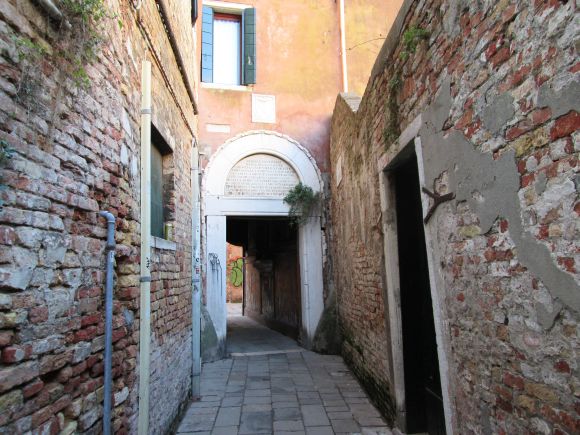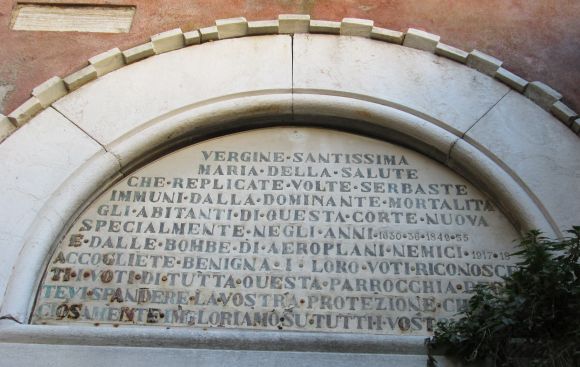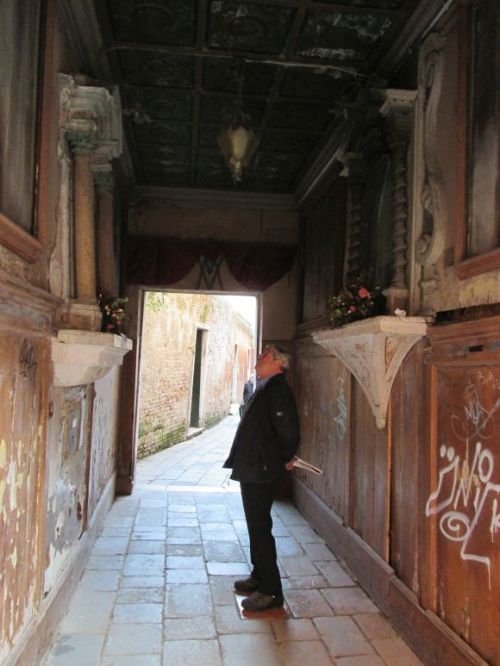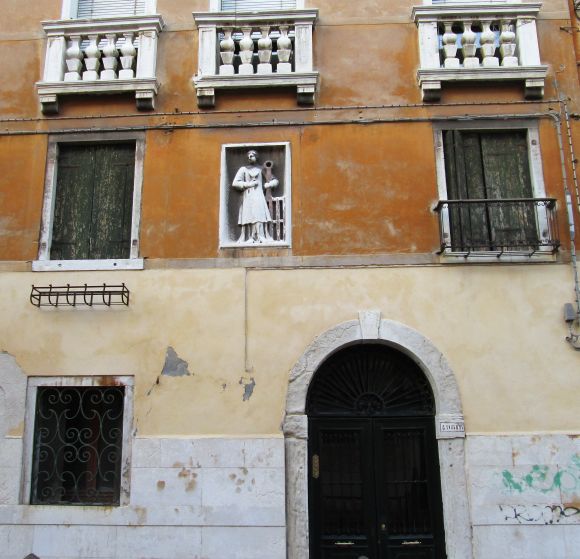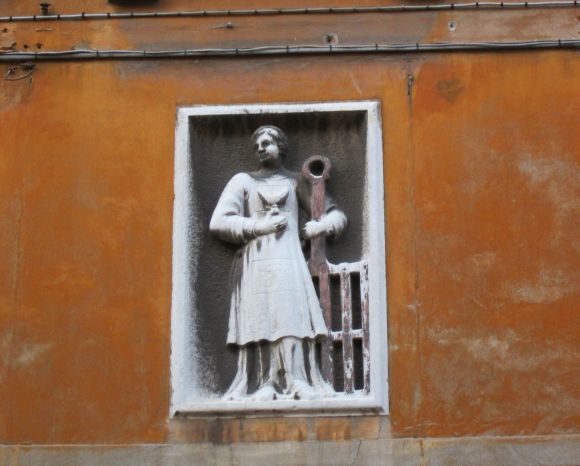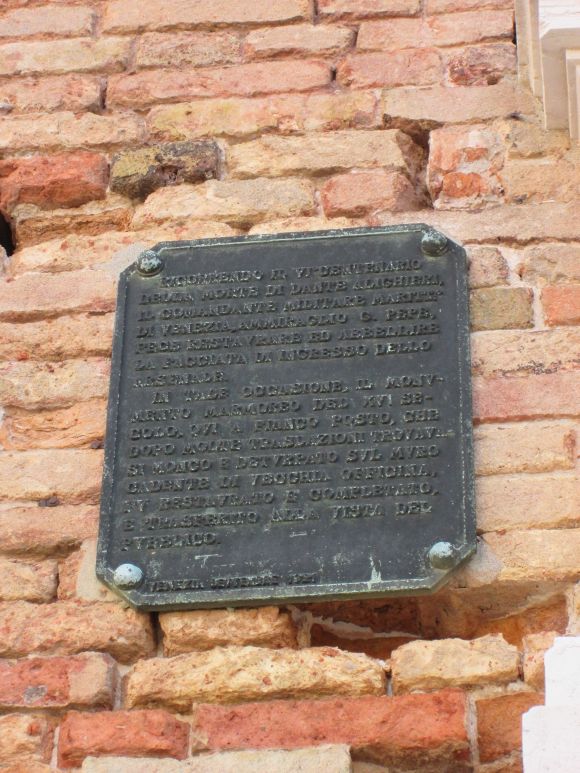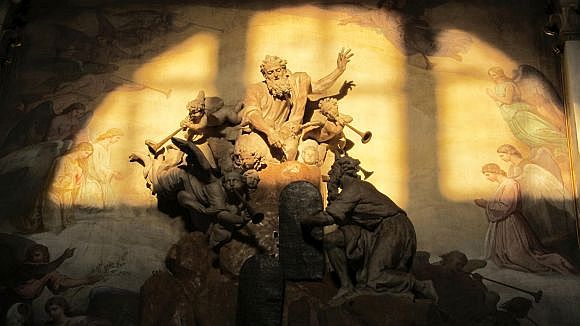
Life under the Serenissima wasn’t all state occasions and visiting potentates. It was a whole lot of craziness, and often some of the main players were priests and nuns (separately and together).
I already knew that a good number of convents were forced-labor camps for generations of patrician Venetian women who, for whatever reason, didn’t win the marriage lottery. There were some cloisters which were notorious for having inmates who adhered closely to the “carpe diem” doctrine of the Church of Life. San Zaccaria, Ognissanti, Santa Maria Maggiore were only a few of the more notorious locations, and where this led is evident by what is sometimes found by men digging to lay new pipes or lines where convents used to be, viz.: a tiny skeleton. Not made up.
San Zaccaria, the Benedictine sisters thereof, built up quite a reputation over the centuries. The Venetian historian Sanudo records that on July 1, 1514, it having been decided (not by the nuns) to “close the parlor of San Zacharia for more honesty, the vicar of the lord patriarch Zuan di Anzolo di Santo Severino…went to accomplish this task with a few captains and officials; seeing that the nuns threw stones at them and forced them to flee…the patriarch himself went in person to accomplish this task. Then, by order of the Council of Ten, someone was sent to make windows.” Need to let some light in, and make it easier for others to see what’s going on. Theoretically.
But that was a temporary inconvenience. In the 17th and 18th centuries things were back to the way they’d been, if not more so. Persons of both sexes came to socialize, to conduct “brilliant conversations”; the nuns organized parties and masked festivities, and sometimes brought in puppet shows to amuse the children who tagged along with the brilliant conversers.

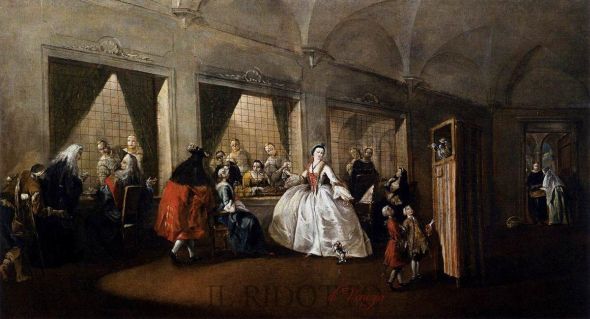
The nearby church of San Lorenzo, like many churches, also had a convent attached to it. The convent is gone and the church is shut, which is too bad if only for the fact that it contains (or contained) the tomb of Marco Polo, who was buried there in 1324.
But the convent is what I want to talk about. Why not? Probably everybody in Venice talked about it. I translate the quaint but pointed style of Giuseppe Tassini, in “Curiosita’ Veneziane“:
“We hinted in various places at the almost general corruption that reigned in the old days among our nuns. But one can say that those of San Lorenzo just about took the prize in that competition.
“On June 16 1360 we find condemned to a year in prison and a fine of 100 lire Marco Boccaso, Zanin Baseggio, and Giuseppe di Marcadello for having fornicated, the first with a Ruzzini, the second with Beriola Contarini, and the third with Orsola Acotanto, professed nuns of that convent.
“A short while later, that is, on July 22, 1360, Margarita revendigola (a renter of sumptuous garb), Bertuccia, the widow of Paolo d’Ancona, Maddalena da Bologna, Margarita da Padova, and Lucia (a slave) were publicly whipped for having carried, as go-betweens, amorous letters and embassies to those nuns.
“As time went on, by the sentence of March 25, 1385, Master Nicolo’ Giustinian, physician, was condemned to two years and three months of prison and a fine of 300 lire, because he was making love to Sister Fiordelise Gradenigo, entering several times with false keys in the convent of San Lorenzo to join his beloved, with whom he had a son.
“Lastly, on June 21, 1385, Marco Gritti had to undergo three years in prison, for having entered the same convent for dishonest ends.
“And in the 17th century the dress of the nuns of San Lorenzo breathes worldly vanity. The proof is in Viaggio per l’alta Italia del Sereniss. Principe di Toscana, poi Granduca Cosimo III, descritto da Filippo Pizzichi. He, speaking of the convent of S. Lorenzo, which he visited with the prince in 1664, expressed himself thus:
“‘This is the richest convent of Venice, and there are more than 100 nuns, all gentlewomen. They dress themselves most elegantly, with white habits in the French manner, the bodice of fine linen with tiny pleats, and the professed wear black lace three fingers wide on the seams; a small veil encircles their forehead, below which their curly hair falls, beautifully arranged; their bosom is half-uncovered, and taken altogether their habit has more of the nymph than the nun.’
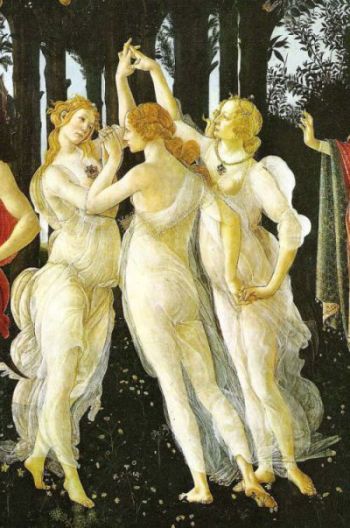
But before you start shaking your fist at the nuns, you should hear something about the priests.
I return to Tassini:
“We read that in 1391 Giacomo Tanto, the pievano (parish priest) of San Maurizio, who had agreed with Tommaso Corner to kill a priest named Giovanni … brought him to a house situated at S. Aponal in the Carampane, under the pretext of giving him ‘a fourth of Malvasia wine for the Mass’ and there, aided by a companion, he slew him.
“Both men returned to the Canonica, where the deceased lived, and stole all of his goods. When the crime was discovered, Tommaso Corner, who was absent, was sentenced on September 28, 1392 to perpetual banishment, and the pievano was condemned to end his life in the cage suspended from the campanile of San Marco on bread and water.” He was the first man recorded to have suffered this castigation.

The “cage” was the cheba (KEH-bah), which is occasionally referred to on admonitory plaques around the city as a possible punishment for breaking whatever rules are set forth on the plaque. It was reserved for ecclesiastics, or for anyone committing crimes in a sacred place. One source says that these crimes were usually “homicide, sodomy, blasphemy, and false witness.”
This cage was either permanently attached to the side of the campanile (examples remain in Mantova and Piacenza), or suspended from a beam inserted, as needed, into the bell tower’s wall. The condemned was put inside it and that was that. Night, day, rain, snow, hail, passing pigeons — he got it all. And a daily ration of bread and water, which is not nourishment; it is only a cheap way to prolong starvation.
But Giacomo Tanto’s stepmother felt sorry for him languishing there, and so she found a way (fancy way of saying “bribed”) to induce an official of the Signori della Notte (the Lords of the Night, or the Almost-Everything Police) AND the chief of the guards of the Piazza, to slip her disgraced stepson other victuals. Not steak, unfortunately, or polenta with seppie, or anything else of a remotely nutritious nature (eat more fruit), but frittelle, and sweet focaccia with walnuts and almonds, and powdered sugar, and other confections which undoubtedly kept his spirits up as he was expiring. She got caught, and the official of the Signori della Notte lost his job and was sent to prison for a year, and Giacomo went back to his daily bread until he died.
But his was no isolated case. In the “Incorrigible Priest” division of the league of renegade religious, we have a very strong team:
Don Francesco of San Polo (1518) was accused of sodomy and consigned to the cheba. Documents report that some kind soul gave him a gaban (gah-BAHN) to wear, to protect him from the elements, even though it was April. The gaban was a long loose robe with sleeves, made of thick rough fabric.
Don Francesco, having plenty of time to spare, devoted himself to pulling the gaban slowly apart, till he had a collection of strips which he tied together, and you know where this is going. On the night of July 1 he somehow managed to get out of the cage, and clinging to the long improvised rope he began to lower himself toward the pavement, and freedom.
But the rope ran out “a good distance” above the ground — enough of a distance to have rendered a fall more conclusive than the cheba.
So he just dangled there, hanging on, and yelling for help. The night guardians came running, retrieved him (I don’t know how — with a net, like the firemen?) and carried him off to prison where the walls would be less accommodating than the cage.
But speaking of being accommodating, we last hear that he was succoured in his new incarceration by the nuns of San Zaccaria who, if you’ll remember, were not exactly “flour for making Communion wafers,” as they say here. So their succouring almost certainly made everything better.
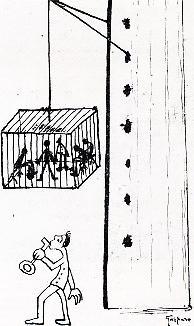
I’m skipping over a few others, such as don Francesco at San Stae (1502), and another don Francesco at Ognissanti (1505), who begot their heirs among the abbesses and their flock, to arrive at the star player: don Agostino of Santa Fosca.
Agostino’s collar did nothing to stem his love for life, among which were girls and gambling. He didn’t interfere with the nuns, amusing himself instead with the commercially available ladies, but that wasn’t his crime. He was tried and sentenced for having blasphemed while playing cards. It can happen, but it’s unpleasant to hear a priest give way to that extent.
He was the last person sent to the cheba. On August 7, 1542, he was taken, hands tied, to the stocks placed between the columns of Marco and Todaro, and left there for six hours. A sign on his chest described his crime and the punishment.
A sort of crown was put on his head, on which were depicted the devils to whom the priest had listened: “…they made me an emperor without an empire….I was crowned without being given a sceptre, wanting to punish me for my iniquity…”. Perhaps you had to have been there.
Then he was taken up and installed in the cheba, where he remained for two months, after which he was taken to prison for another ten months.
Leaving prison, he was banished for life, which meant leaving the entire Venetian territory, which would have cut out a large part of Northeast Italy, the eastern Adriatic coast, and chunks of Greece, including Crete. Still, that left plenty of other places where they must have known how to play cards and lose money.
Don’t imagine this is an exhaustive list. It’s just all I know so far. But looking around, I notice that the mortal sins have continued to flourish, so I leave you with don Agostino’s penitential warning: “Flee from gambling, do not blaspheme the saints, even less the Lord God…abandon playing cards, blasphemy and prostitutes…”.
I admiringly acknowledge the exceptional research of a personage named Giandri, whose website is marvelous reading (in Italian, alas for many).


